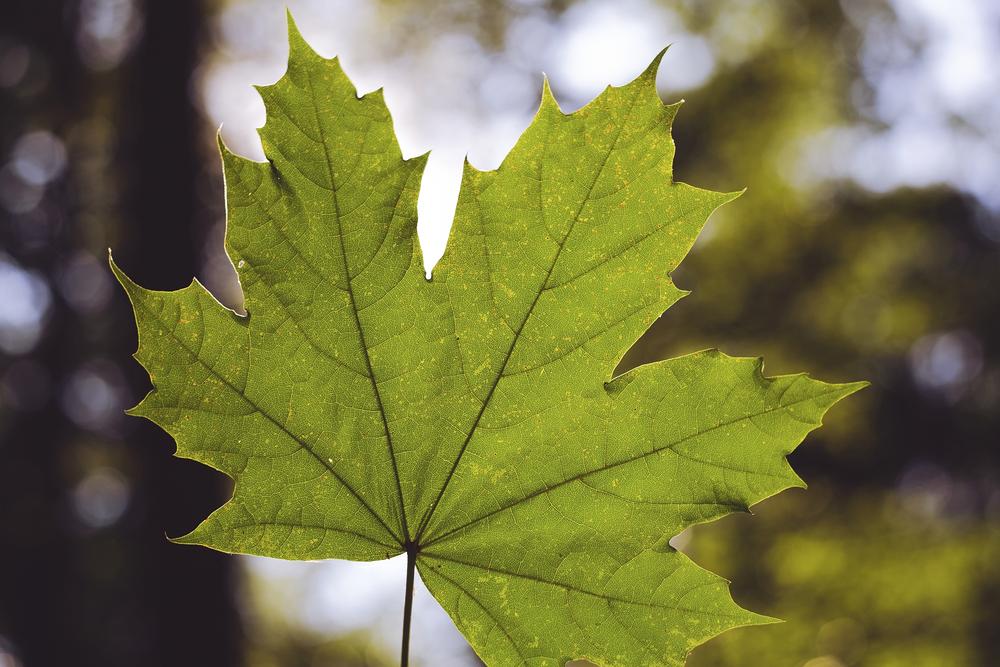Bigleaf Maple – Acer macrophyllum
There are few things as delightfully childlike as going out of the way to hear the crunch of fall leaves underfoot. Growing up, my family had a huge bigleaf maple tree that would produce an outstanding number of fluorescently yellow and red leaves which would drop just in time for Halloween leaf piles. We would take turns jumping into the leaf pile, inspired no doubt by the children’s books of the late 90s. While the jump itself was somewhat underwhelming, I still remember the smell of the leaves; earthy, crisp, and unmistakably fall. Even today, when I catch that scent on the wind it takes me right back to autumns past; first days of school, Halloweens, and hot cocoas after playing outside for a little too long in the newly chilly weather
Washington is not as well known for leaf season as New England for example, likely because we have a lower concentration of trees that lose their leaves (we call them deciduous). However, our fall foliage is still particularly beautiful due in large part to the iconic bigleaf maple. This native tree frequently dominates the young (less than 150 year old) forests of Washington, because it can establish more quickly than many longer-lived evergreen trees. As the forest matures, bigleaf maples begin to die of old age (around 200), and evergreens take over. This is why it is rare to see large bigleaf maples in developed forests, unless there has been a recent disturbance such as a fire or rockfall.
The bigleaf maple, as its name suggests, has large leaves, this and its five sections, called lobes, can easily help the viewer distinguish it from the other maples native to Washington. Another way to identify this species is to look for the tree most covered in greenery: lichens, mosses, and ferns. The maple is not damaged by these so-called epiphytes, these hitchhikers produce their own energy and simply use the maple as a surface to grow. The bigleaf is also the tallest maple tree in North America!
The fall colors of maples and other deciduous trees are a result of the senescence, the final stage of leaf development. During senescence, leaves begin to transition for winter. The process is triggered by night length and each species has a benchmark where they begin to change, which means that it happens at approximately the same time every year. Though as the years go on, you may begin to see trees with leaves outlined by yellow earlier in the year than expected; this is because the tree is not getting enough water and is likely influenced by unseasonably hot weather. During spring and summer, chlorophyll is the dominant pigment present in green leaves. It is responsible for absorbing most wavelengths of light except for green, allowing the leaves to appear green to the human eye. This green appearing pigment is pivotal in photosynthesis, the process by which plants convert light to food. As deciduous trees are preparing for winter, chlorophyll production slows, and the chlorophyll is broken down. This process occurs so that when the tree leaves drop, not much energy is lost.
Now we know why the leaves are no longer green, but why do they then become red, yellow, and orange? Chlorophyll is not the only pigment present in leaves, there is also anthocyanin, another pigment that plants use as a filter to absorb harmful rays of light. This pigment appears red, but it is not present in as high of quantities as chlorophyll so when chlorophyll levels are high, it masks the red coloring. When chlorophyl gets broken down in fall, we can see the colors that remain. This red appearing pigment is produced at higher levels when days are warm and nights are crisp but not freezing, which is why some years have more vibrant fall colors than others.
At the end of the day, it is not essential to understand the chemistry behind fall colors, but we at Shadow find that the more you know about plants, the more you will come to love and appreciate them!
By: Cecilia Black, SHADOW Education Program Lead


Recent Comments